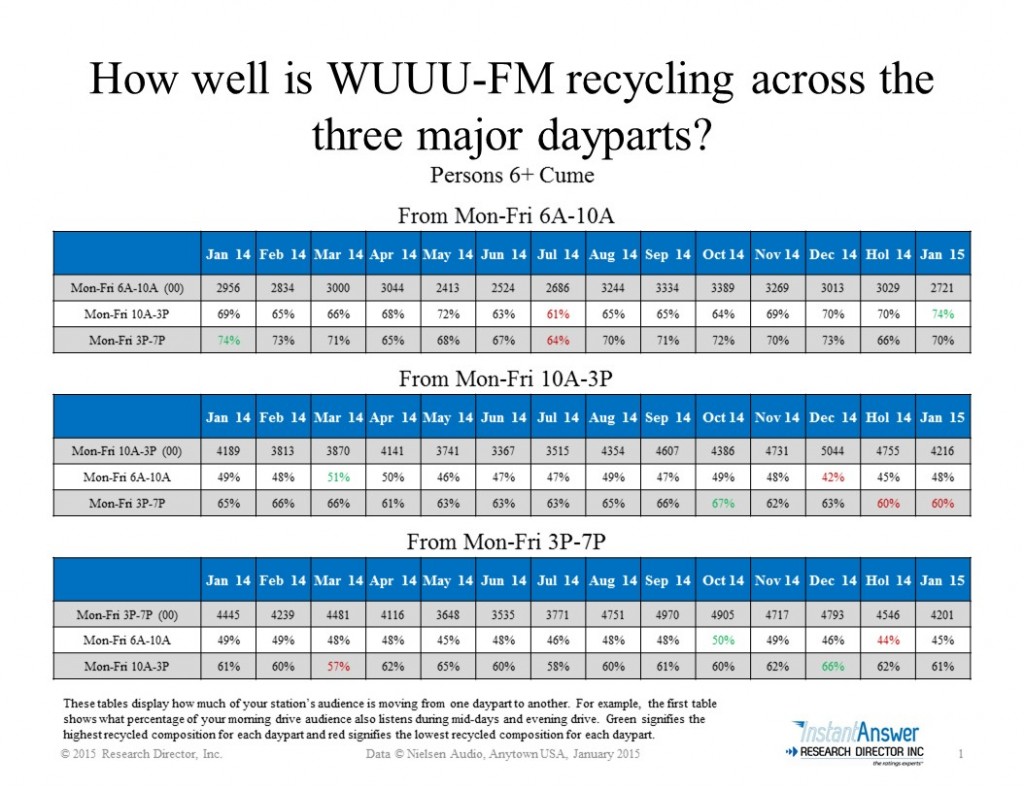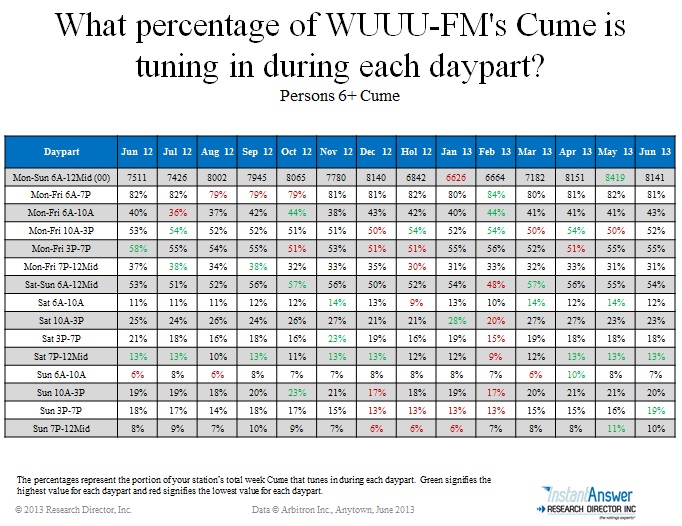
Hot Topics
Occasions, Durations, and Shares – Oh My!
January 8, 2015
The Holy Grail statistic of a station’s ratings is Average Quarter Hour (AQH). For programming it determines how much of the radio listening pie you have carved out for yourself. For sales it determines how much they can charge for that listening slice. The challenge for all is to increase that AQH number as much as possible.
This can be done one of three ways. Since AQH is based on Cume and Time Spent Listening (TSL), or AWTE in PPM markets, increasing either of those numbers will lead to an increase in AQH.
Cume is obvious but is often dependent on vanishing marketing resources or major on-air programming changes like all Christmas music or a competitor’s demise. While a station’s cume will fluctuate from book to book, it usually takes dramatic changes to attract massive amounts of new cume.
TSL/AWTE, on the other hand, can be massaged, manipulated, or affected by what is done to your current cume. You already have them – now you just want to keep more of their listening.
TSL/AWTE is based on two metrics – occasions and durations. The former is how often someone visits your station for at least five minutes in a given quarter hour. The latter is how long they stay. In the PPM world, average durations are pretty static. On a broad basis they tend to hover around ten minutes. The old adage of “getting them to listen longer” does not play out – especially in today’s short attention span world. And, realistically, what could you possibly do to keep someone from turning off the radio, for example, when their commute ends? Are they really going to sit in their driveway instead of going in their house?
So, that leaves us with occasions. How do you increase that metric? The best way is through recycling. Finding techniques to drive vertical listening is one way to increase occasions. Regardless of your technique, it is important to track how well it is working. This chart from our Instant Answer℠ report shows you how well your station is moving listeners throughout the day:
While formats and markets differ, you’d like to see your cross-cuming to be above 45% between each prime daypart.
The other way to measure occasions is to see how many different dayparts your cume is sampling. This provides you with an idea as to where listening is heaviest. Then, you can recycle out of your heaviest tuned-in daypart into those that need help. For example, let’s say 50% of your cume tunes in on the weekend but only 40% sample mid-day. The opportunity lies in getting those weekend listeners to try you at work.
This chart shows how we track cume tune-in:
Again, percentages will vary by market and format. The key is to see how you are trending. Often, you can determine the cause of a bad (or good) book just by looking at this chart. If a normally hot daypart all of a sudden loses tune-in you may have your answer.
What techniques you use to affect occasions are part of the art of programming. However, focusing on this specific metric can have an immediate effect on your AQH.
-Steve Allan, Programming Research Consultant


Comments